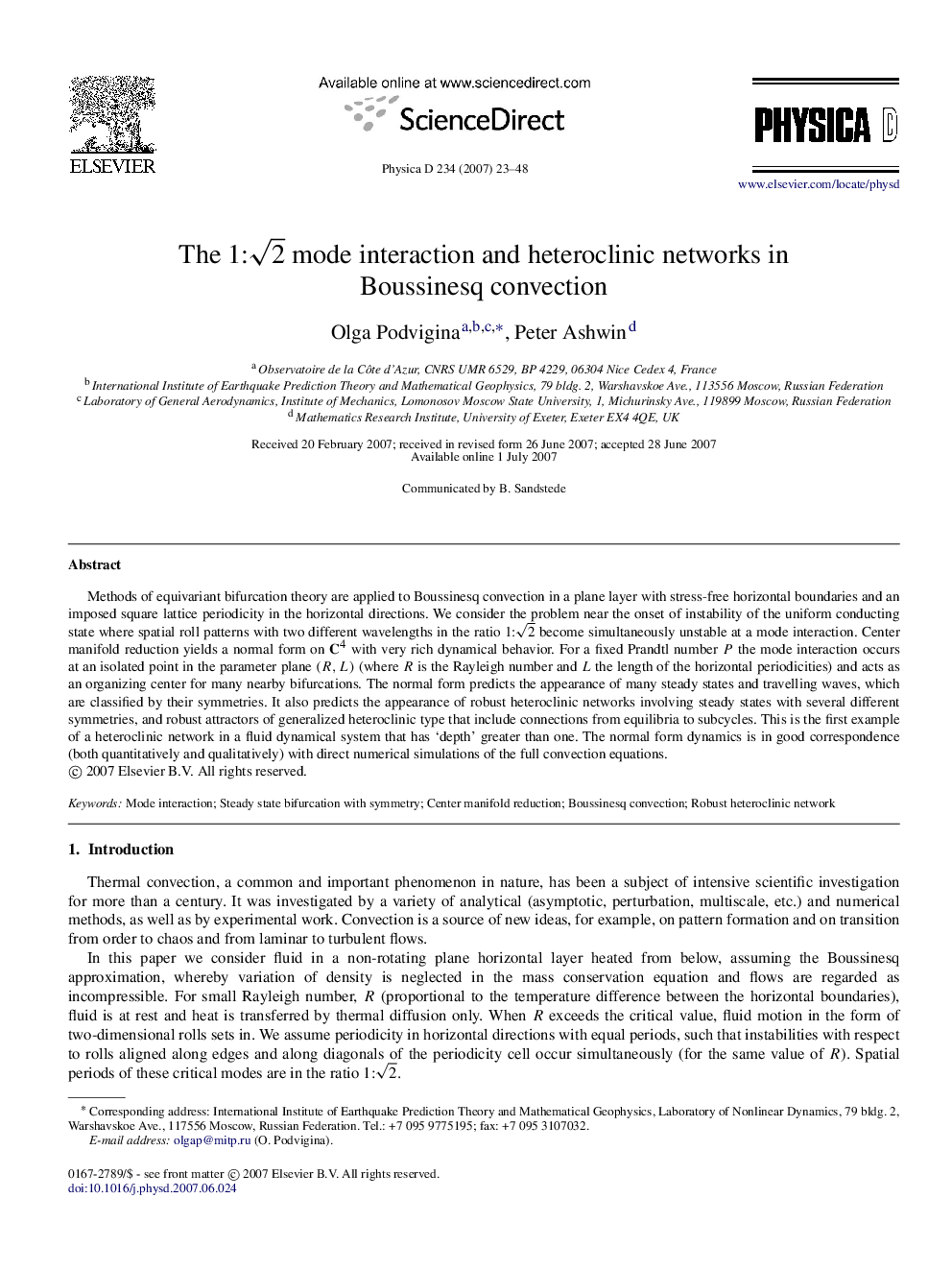| Article ID | Journal | Published Year | Pages | File Type |
|---|---|---|---|---|
| 1898131 | Physica D: Nonlinear Phenomena | 2007 | 26 Pages |
Abstract
Methods of equivariant bifurcation theory are applied to Boussinesq convection in a plane layer with stress-free horizontal boundaries and an imposed square lattice periodicity in the horizontal directions. We consider the problem near the onset of instability of the uniform conducting state where spatial roll patterns with two different wavelengths in the ratio 1:2 become simultaneously unstable at a mode interaction. Center manifold reduction yields a normal form on C4 with very rich dynamical behavior. For a fixed Prandtl number P the mode interaction occurs at an isolated point in the parameter plane (R,L) (where R is the Rayleigh number and L the length of the horizontal periodicities) and acts as an organizing center for many nearby bifurcations. The normal form predicts the appearance of many steady states and travelling waves, which are classified by their symmetries. It also predicts the appearance of robust heteroclinic networks involving steady states with several different symmetries, and robust attractors of generalized heteroclinic type that include connections from equilibria to subcycles. This is the first example of a heteroclinic network in a fluid dynamical system that has 'depth' greater than one. The normal form dynamics is in good correspondence (both quantitatively and qualitatively) with direct numerical simulations of the full convection equations.
Related Topics
Physical Sciences and Engineering
Mathematics
Applied Mathematics
Authors
Olga Podvigina, Peter Ashwin,
